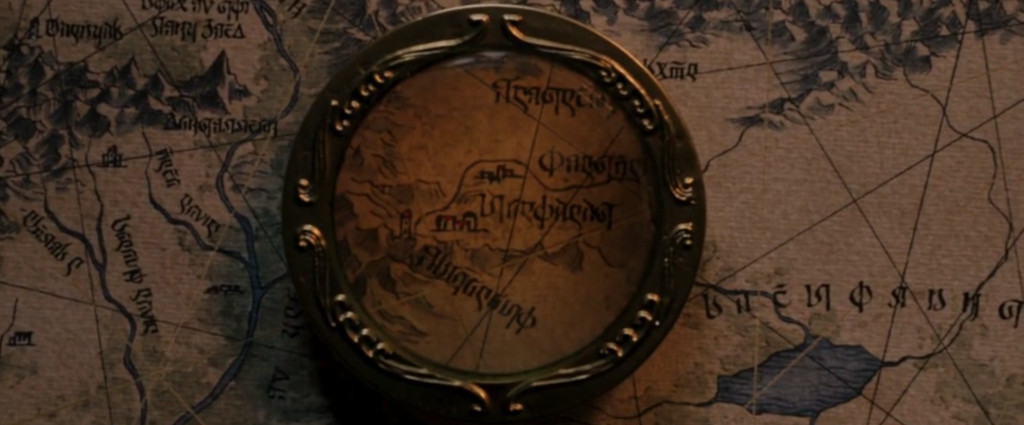
How Closely Does The Rings of Power Follow What Tolkien Actually Wrote? (Part I – Locations)
What is the purpose of adapting a beloved literary work to film or television? For the studio producing the adaptation, of course the basic purpose is to make money. But what of the audience? For those who are already fans of the book(s), there is a certain pleasure in seeing a beloved story realized in a visual medium, at least if the adaptation is visually and emotionally appealing and/or does not deviate significantly from the plot logic and characterizations of the book(s). There is also the added benefit of being able to share one’s fandom with more people. Reading novels is a time-consuming and usually solitary activity. With a film or even a television show, the barrier to entry is lower for most people, and therefore it is easier to promote to one’s friends and family, who might balk at reading a few thousand, or even a few hundred, pages of text.
For those who are not already fans of the work that has been adapted, however, what is the appeal? Perhaps it might just be to see something new. However, for many such people, I imagine a big part of the draw is curiosity to see what all the fuss is about. Or, in other words, to get a taste of the literary work without having to commit to reading the whole thing. This is not, in itself, a bad reason to watch an adaptation. However, for anyone who is the least bit familiar with Hollywood adaptations of literary works (or historical events, for that matter), the question should arise: “How well does this film (or series) actually match the work it was adapted from?” My intention with this series of articles is to answer this question for the Amazon Series The Rings of Power.
What is The Rings of Power based on?
But first, what does The Rings of Power actually adapt? According to the opening credits, the series is based on The Lord of the Rings and its Appendices. However, the story told in The Lord of the Rings takes place thousands of years after the story told in The Rings of Power. What The Rings of Power is adapting is actually the backstory to The Lord of the Rings. This backstory is not one singular narrative, but is told in brief fragments in several places within the narrative of The Lord of the Rings (particularly in the chapters “The Shadow of the Past” and “The Council of Elrond”) as well as in the Appendices (particularly in Appendix A: Annals of the Kings and Rulers and Appendix B: The Tale of Years), not to mention in other works published after Tolkien’s death, such as The Silmarillion, Unfinished Tales of Númenor and Middle-earth, the 12-volume History of Middle-earth, The Letters of J.R.R. Tolkien, and The Nature of Middle-earth. Fortunately for anyone wishing to obtain a clear picture of what Tolkien actually wrote regarding the Second Age (the era in which The Rings of Power largely takes place), this material has been gathered together in one convenient volume, titled The Fall of Númenor: and Other Tales from the Second Age of Middle-earth, published one month after Season 1 of The Rings of Power finished airing.
Unfortunately for Amazon’s purposes, it seems they only have rights to The Lord of the Rings and its Appendices, and not to any other works also relevant to the Second Age. However, this is not as big a deal as some people make of it. Most of the relevant backstory to The Lord of the Rings is, in fact, contained within The Lord of the Rings and its Appendices. Other works do elaborate on certain details, but Tolkien really created no Second Age narrative comparable to those he created of the First Age (contained in The Silmarillion) and the Third Age (contained in The Hobbit and The Lord of the Rings). For better or worse, this is something Amazon’s showrunners and writing team had to mostly create themselves.
In this series of articles I will consider the locations, characters, and events of the first season of The Rings of Power with regard to how well they match anything Tolkien actually wrote about the Second Age (or First Age, where relevant), whether or not it is a work Amazon officially has access to. In this particular article I will go over the locations in The Rings of Power. It may be helpful to compare this article with one I wrote before the show aired, which only covered Second Age locations that Tolkien himself wrote about.
Locations
Valinor
The show begins in Valinor, a land in which divine beings known as the Valar live, as well as many Elves. Valinor was lit by the light of the Two Trees before they were darkened by Morgoth in the First Age. This is indeed from Tolkien. Although readers of The Hobbit and The Lord of the Rings alone may be only vaguely familiar with Valinor, it figures heavily in The Silmarillion. The show does not tell us explicitly, but the Elven city we see when Finrod crosses over the rise is most likely Tirion.
Middle-earth
Early on in the show, many Elves, including Finrod and Galadriel, cross the Great Sea eastward to Middle-earth. (In fact, in most accounts Galadriel and her brothers obtained no ships, and had to cross from Valinor to Middle-earth via a land bridge far to the north; however, Amazon likely had no rights to these accounts, and at any rate having all the Elves cross the Sea together simplifies the account of what is merely a prologue to the main story.) Readers of The Hobbit and The Lord of the Rings often assume that “Middle-earth” is the name of the world in which those tales occur, likely because in Modern English the word “Earth” is typically thought of as referring to a planet. The Rings of Power is actually correct here in using “Middle-earth” to refer to a continent, separate from Valinor (technically the continent of Aman) and Númenor (technically the Isle of Elenna).
Beleriand
Some people have noticed that the map shown when the Elves are crossing the sea is actually of Middle-earth during the Second Age or later. The time of the Elves’ crossing was during the First Age, and they crossed the sea to the region of Beleriand, which no longer exists on the map displayed in the show. This may be because Amazon didn’t wish to confuse the viewer with differing maps of Middle-earth, but is very likely mostly because Amazon was not granted rights to a map of the First Age. As we shall see, the Tolkien Estate seems to have been very strict regarding what Amazon is allowed to show from the First Age.
Although Beleriand is not shown on the map, Arondir mentions the land in his conversation with Adar. (It appears in the subtitles. Arondir actually speaks a Quenya form of the name, Valariandessë.) Adar speaks of a river in Beleriand whose banks were covered in sage. Most likely he is referring to Sirion, the major river in Beleriand. However, the fact that sage grows along the banks of the Sirion, or the banks of any river in Beleriand, appears to be a detail made up by Amazon’s writers. The scenes of war that follow the Elves’ crossing of the Sea until the downfall of Morgoth all presumably take place in Beleriand, though we are not told this fact specifically. Beleriand was mostly sunk under the sea during the final war with Morgoth, and no longer existed during the Second Age.
Forodwaith
Forodwaith is the name of both a land (also called the “Northern Waste”) and a people in the far north of Middle-earth. The land itself is mentioned in Tolkien’s writings and on his (and his son Christopher’s) maps of Middle-earth in the Third Age. In the show Forodwaith is the setting of an expedition by Galadriel and a handful of Elven soldiers taking place some centuries after the defeat of Morgoth, and therefore well into the Second Age. There they find a fortress, abandoned by all but a troll, but once inhabited by Sauron and his Orcs. This fortress, named Dúrnost on Galadriel’s map and in behind-the-scenes material, is not exactly from Tolkien. In the Second Age Sauron went into the East of Middle-earth before reemerging, not the North. However, long before the Second Age Morgoth had a stronghold in the Far North of Middle-earth, called Utumno in Quenya and Udûn in Sindarin. This stronghold was built under the mountains, though, rather than on top of them, and was destroyed in the Years of the Trees. However, it (as well as Morgoth’s mountain fortress of Angband in northern Beleriand) was likely an inspiration for Sauron’s fortress of Dúrnost in the Amazon show.
Lindon
Although not terribly familiar to readers of The Hobbit and The Lord of the Rings, Lindon was the preeminent Elven realm of the Second Age. Situated in the far northwest corner of Middle-earth, Lindon was what remained of Beleriand after most of the region was sunk during the War of Wrath that brought about Morgoth’s defeat. The inhabitants of Lindon were those who had inhabited Beleriand in the First Age and their descendants. Although the show does not go into such detail, Lindon had three major settlements called Forlond, Harlond, and Mithlond, all situated on the Gulf of Lune. Mithlond is better known as the “Grey Havens” from which Elven ships set sail for Valinor.
Tolkien did not specify where in Lindon Gil-galad held court. He is said to have resided in Forlond, but Mithlond seems to have been the most important settlement. It is also conceivable that Gil-galad, like some Medieval kings, had a traveling court. The show is also cagey about this, referring only to Lindon (the land) as the “Capital of the High Elves”, and never showing Gil-galad holding court—unless the Great Tree is where he holds court. But one imagines he would tire of standing there.
Lindon is depicted in the show as a heavily forested land. Official maps of Lindon do show forests in the foothills of the Blue Mountains, if not right next to the Gulf of Lune. However, nowhere are the trees described as having golden leaves. Although they are not explicitly called as such, the trees of Lindon seem to be a nod to the mellyrn of Lothlórien later in the Third Age, though mallorn leaves were golden only in the autumn and winter, and the trees of Lindon seem to have golden leaves all year round, even when other leaves are green. Interestingly, Tolkien did write about the mallorn tree in connection to Lindon in the Second Age: In Unfinished Tales the tree is said to have grown in the West of Númenor. Tar-Aldarion of Númenor presented mallorn nuts to Gil-galad, but they did not grow in Lindon. Presumably its climate was too cold. The Great Tree of Lindon and its descendant in Khazad-dûm, both from The Rings of Power, are not exactly from Tolkien. However, trees of special significance whose health is related to the health of the realm are a recurring motif in Tolkien.
Rhovanion
Also known to readers of The Hobbit as Wilderland, Rhovanion is a region that is rather familiar to most Tolkien fans. In The Rings of Power Rhovanion is where the Harfoots wander. A major feature of Rhovanion is a large forest, known in the time of The Hobbit as Mirkwood. In The Rings of Power this forest is known as The Greenwood (Eryn Galen in Sindarin), and is where the Stranger encounters the Mystics. These place names are from Tolkien. He typically referred to the forest as Greenwood the Great before it became Mirkwood. Eryn Galen is Tolkien’s Sindarin gloss, and it literally means “green forest”, or “green woods”.
Most other places in Rhovanion mentioned in The Rings of Power were made up for the show. Those mentioned in dialog include the Old Forest, Norfield Glen, the Grove, and Rockfoot Pass. It is not clear whether the Old Forest is a different forest from the Greenwood, but since Sadoc mentions the Greenwood by name, it would seem to be the case. Norfield Glen seems to be the place (in the “Rhovanion Hills”) where the Harfoots are camped at the beginning of the show, and the Grove is the place where they are camped at the end of the show.
Some place names also appear on the map displayed in the show, such as during the Harfoots’ migration. The place names that appear in black type (such as Anduin, Limlight, and Calenardhon) seem to all be from Tolkien, whereas the names that appear in gold type (Rhovanion Hills, Weedbrook, Undercliffs, Grey Marshes, Trout Bend, Thistledell, and The Braids) were created for the show. (Gold type seems to indicate a location or destination of characters in the show.) In the case of the Grey Marshes, however, this is another name for the same location known as the Dead Marshes in The Lord of the Rings.
One location that is not mentioned in the series so far is the Shire. (I am assuming that the “Old Forest” is not the one that borders the Shire, because it would seem to be too far from where the Harfoots are presently wandering.) According to Tolkien the Hobbits did not settle the Shire until the Third Age. Their earliest known settlement was along the banks of the Anduin River, in the Third Age. It is not known where the Hobbits’ ancestors lived in the Second Age, but the locations given in The Rings of Power are sensible choices given their settlement in the Vales of Anduin in the early Third Age.
The Southlands
In The Rings of Power the Southlands are a territory more or less equivalent in extent to Mordor. Mordor is also mentioned in the show, though not directly in the dialog, but it is a place name that is familiar to even the most casual Tolkien fans. Tolkien did, in fact, use the term “Southlands” in his writings, though not in reference specifically to Mordor. In The Lord of the Rings Faramir mentions seeing Hobbits twice in the Southlands. The locations were Ithilien and Minas Tirith, both of which are in Gondor. Also, in “Of the Rings of Power and the Third Age” in The Silmarillion, Tolkien refers to the lands south of Mordor and the Anduin as “the southlands”. The term parallels the more common “Westlands”, but the Westlands are a large region, not a specific realm. One would think the Southlands would have a similar meaning.
Of the places mentioned in the Southlands, the mountain called Orodruin (better known as “Mount Doom” to readers of The Lord of the Rings) is from Tolkien, but the villages of Tirharad, Hordern, and Iorbad, and the Watchtower of Ostirith were all invented for the show, although Sindarin was used for Tirharad (“Southern Watch”), Ostirith (“Fortress of the Guard”), and possibly Iorbad (“Old Pathway”). The Númenórean settlement of Pelargir, where Arondir and Bronwyn intend to go near the end of Season 1, is also from Tolkien. Tolkien describes Mordor as an arid wasteland, particularly around Mount Doom (where the villages in The Rings of Power are located), at least in the Third Age. The idea that it was green and fertile during the early Second Age comes from the Amazon writing team. Tolkien did not really describe the landscape of Mordor before Sauron made it his home, other than that Mount Doom was already there.
Eregion
The land of Eregion is better known to readers of The Lord of the Rings as Hollin, the land through which the Fellowship passed after leaving Rivendell and before entering Moria. Eregion is Sindarin for “land of holly”. The realm was established by Elves from Lindon. Its principal settlement was the city of Ost-in-Edhil (“Fortress of the Elves”). As with Lindon, in The Rings of Power the land is mentioned by name, but not any of its settlements. Eregion was founded in response to the Dwarves’ discovery of mithril, and was known for its guild of jewel-smiths, the Gwaith-i-Mírdain. Celebrimbor was both the founder of the guild and the lord of the land. Tolkien did not describe the city in detail. The great tower, built with Dwarf labor, that contained Celebrimbor’s forge and workshop is an invention of the show. Ost-in-Edhil was near the confluence of the rivers Sirannon (flowing from Khazad-dûm) and Glanduin (which formed the Southern boundary of Eregion). In The Rings of Power Galadriel’s confrontation with Halbrand takes place on the bank of the Glanduin.
Khazad-dûm
Moria is a location known to readers of The Hobbit and especially The Lord of the Rings. In the latter book the Fellowship passes through Moria after an unsuccessful attempt to cross over the Misty Mountains via the Redhorn Gate (the Pass of Caradhras). Moria is the Sindarin name of the Dwarven realm. In Khuzdul, the language of the Dwarves, it is called Khazad-dûm, “The Mansions of the Dwarves”. The Mirrormere, also mentioned in the show, is a lake on the eastern side of the Misty Mountains, below the East-gate of Khazad-dûm. In the show Elrond enters Khazad-dûm through the West-gate, presumably before the famous Doors of Durin were built. The pool in front of the West-gate where the Watcher in the Water lurked was caused by the damming of the Sirannon River, and did not exist in the Second Age. The Misty Mountains are also known (in Sindarin) as the Hithaeglir, hence “The Song of the Roots of Hithaeglir” mentioned in the show. (The story itself is not from Tolkien, as Elrond’s comment on its “apocryphal” status might imply.)
Númenor
Careful readers of The Lord of the Rings (and watchers of the New Line Films) know that Númenor was where the ancestors of characters such as Aragorn, Boromir, and Faramir came from. During the Second Age Númenor was the preeminent Mannish realm, settled by the descendants of Men who fought alongside the Elves during the wars against Morgoth in the First Age. After the destruction of Beleriand, these Men were granted a new home on an island in the middle of the Great Sea Belegaer (also known as the Sundering Seas). The island was called Elenna (“Starwards” in Quenya), and the realm that was established upon it was known as Númenor, or “Westernesse”. It was also called the “Land of the Star”, because it was shaped like a five-pointed star, and/or because its inhabitants had followed the Star of Eärendil in order to find it. As depicted in The Rings of Power, the island had a high mountain in the center, called Meneltarma. (Kemen offers Eärien wine “from vineyards near the Meneltarma”.)
Major settlements in Númenor include the capital of Armenelos, the eastern port of Rómenna, and the northwestern port of Andúnië. In The Rings of Power most scenes in Númenor take place in Armenelos. Pharazôn mentions the city by name, calling it the “triumph of our civilization”. In maps of Númenor Armenelos is typically depicted as landlocked, situated just southeast of Meneltarma. However, in The Rings of Power Armenelos is navigable by seagoing ships, and appears to be some distance from the mountain. It is not clear to me whether Galadriel and Halbrand arrived at Armenelos via the River Siril (whose mouth even on Amazon’s map is depicted as a marshy delta), via the Bay of Rómenna, which is wide and only gradually narrows, or via some other waterway. Andúnië is not mentioned by name, but is alluded to when various characters refer to the West of Númenor. In fact, Elendil’s father Amandil (who would have still been alive at the time of The Rings of Power) was the Lord of Andúnië, and Elendil would have been his apparent heir. Later the family moved to Rómenna. It seems Amazon chose to have Elendil and family living in Armenelos in order to preserve unity of place, as well as to keep costs down by filming only one city in Númenor.
Tolkien did not describe the city of Armenelos in great detail, so most of it has been invented by Amazon, including especially the docks, canals, and so on that are characteristic of a port city, as well as the large statue of Eärendil in the harbor. However, he did describe the city as situated on a hill, containing a King’s Court, and within the Court the White Tree Nimloth. The superstition regarding the petals falling (which one might think would happen every year) does not come from Tolkien. Instead, Tolkien linked the death of Nimloth (and its descendants) with the decadence of the Dúnedain (that is, the Númenóreans and their descendants).
The Hall of Lore where Galadriel finds information regarding the sigil of Sauron is also not from Tolkien. Some people have speculated that the building was the tower on the hill Oromet. However, that tower was built by Tar-Minastir, whereas the Hall of Lore in The Rings of Power was built by Elros. Also, Oromet is near Andúnië, and it seems unlikely that Elendil and Galadriel rode that far from Armenelos. Also, in the show the West of Númenor is often mentioned, but not shown, so it would seem strange to have Elendil go there (where his son Anárion apparently lives).
Rhûn
Although not depicted in the first season of The Rings of Power, Rhûn is mentioned several times (and even pronounced correctly, I was pleased to hear). The name is from Tolkien, occurring in the name of the Sea of Rhûn, a great inland body of water to the east of Rhovanion. The word also refers to the land near this sea, which was the home of the people called Easterlings in the Second and Third Ages. (The Easterlings who arrived in Beleriand in the First Age were probably a separate people.) More generally, the name Rhûn refers to all the lands to the East of Rhovanion and Mordor, stretching all the way to the eastern shores of Middle-earth. In Sindarin the word simply means “East”.
According to Tolkien, Sauron spent much of his time in the early Second Age in the “East”, presumably among the people who lived near the Sea of Rhûn, before establishing himself in Mordor. The Rings of Power makes no reference to this, apart from the fact that the three Mystics who are searching for Sauron say they come from Rhûn. Also, two Wizards were sent to Rhûn and Harad to combat Sauron’s influence there, an event that Tolkien placed in the Second Age in some of his last writings. It seems the Stranger will fill a similar role in Season 2. It does seem odd, though, that a native to Rhûn would say the stars are “strange” there. Even ignoring the oddness, this is likely a mistake caused by misunderstanding the words Tolkien gave to Aragorn in “The Council of Elrond”:
I have crossed many mountains and many rivers, and trodden many plains, even into the far countries of Rhûn and Harad where the stars are strange.
At first glance this seems to be saying that the stars are strange in Rhûn and Harad. However, any amateur astronomer knows that the stars are the same as you go from west to east, and only different when you go from north to south across the Equator, or vice versa. For someone who painstakingly calculated the phases of the moon along Frodo’s quest, this seems an unlikely mistake to make, so it seems to me that Tolkien (and Aragorn) only meant that it was in Harad where the stars are strange (for someone from the North, as Aragorn is).
Conclusion
The geography of The Rings of Power is largely taken straight from Tolkien’s writings and maps. There are a few additions, notably in Rhovanion and “the Southlands”, as one might expect from an adaptation. Even the added place names do not seem out of place. The places in Rhovanion are given ordinary English names, consistent with the use of Hobbits as our point-of-view characters. The places in the Southlands are largely Sindarin, which if we accept the presence of Sindarin-speaking Elves there, also makes some sense. The exception is the village of Hordern, which has no discernible meaning. But Tolkien also created place names in Gondor that were unconnected to his invented languages, such as Erech, Eilenach, and Forlong. I would say the major additions of The Rings of Power to Tolkien’s existing writings are the fortress of Sauron in Forodwaith, and a handful of villages as a would-be “kingdom” in proto-Mordor, which isn’t much, really. Season 2 should give us more new locations with the introduction of Rhûn. As for omissions, the omission of Beleriand from the map of Middle-earth in the First Age, would certainly be a major one, but I believe it is largely due to the limitations on Amazon’s rights to the works of Tolkien. The Rings of Power is not saying that Beleriand did not exist during the First Age, as the conversation between Adar and Arondir demonstrates.
I have not really considered the issue of improbable travel times. (For example, in the Age of Sail it generally took one to two months to cross the Atlantic Ocean, whereas in The Rings of Power people seem to cross the Sundering Seas much more quickly.) These travel times do not actually change the established geography, but rather ignore it for convenience. Otherwise Bree would be just across the Brandywine River from the Shire on New Line Cinema’s maps of Middle-earth, which is not the case. Writers of future episodes will still probably refer to Amazon’s official maps of the Second Age on matters of geography rather than attempt to reverse engineer the geography from statements made in previous episodes.
I also have not given much consideration to the actual filming locations used, since they are merely representations of the places on the map, and for the most part they seem to me to fit well enough any description given of them. The one exception is the fjord through which Galadriel and Halbrand passed to arrive at Armenelos, which seems to me not to match the situation of either the River Siril or the Bay of Rómenna on Amazon’s map of Númenor.
Finally, I have not given much consideration to actual buildings within established settlements, since for the most part Tolkien himself did not give us descriptions of such structures, let alone maps of cities, so that is something that Amazon (or anyone seeking to adapt the Second Age to film) necessarily needed to design for the purposes of the show.
The geography of the show is actually one of the first things Amazon revealed to us, nearly four years ago, with a series of maps culminating in the full-blown map of Middle-earth and Númenor at the height of the Second Age. The maps were designed by Tolkien artist John Howe, with input from Tolkien scholar Tom Shippey. Perhaps it is not a surprise that this is one aspect Amazon got (in my opinion, at least) mostly right.
Following the chronology of Amazon’s marketing strategy, I will next consider the characters of the series, and then finally the actual events of Season 1.
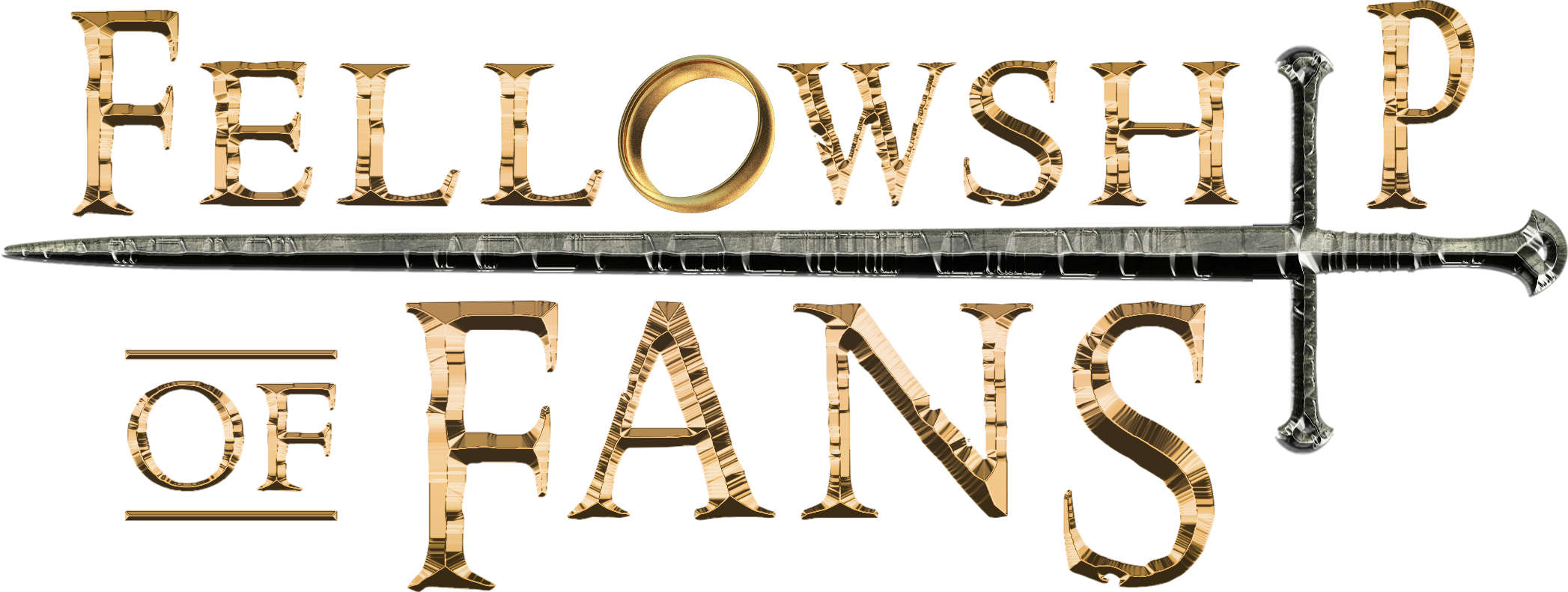
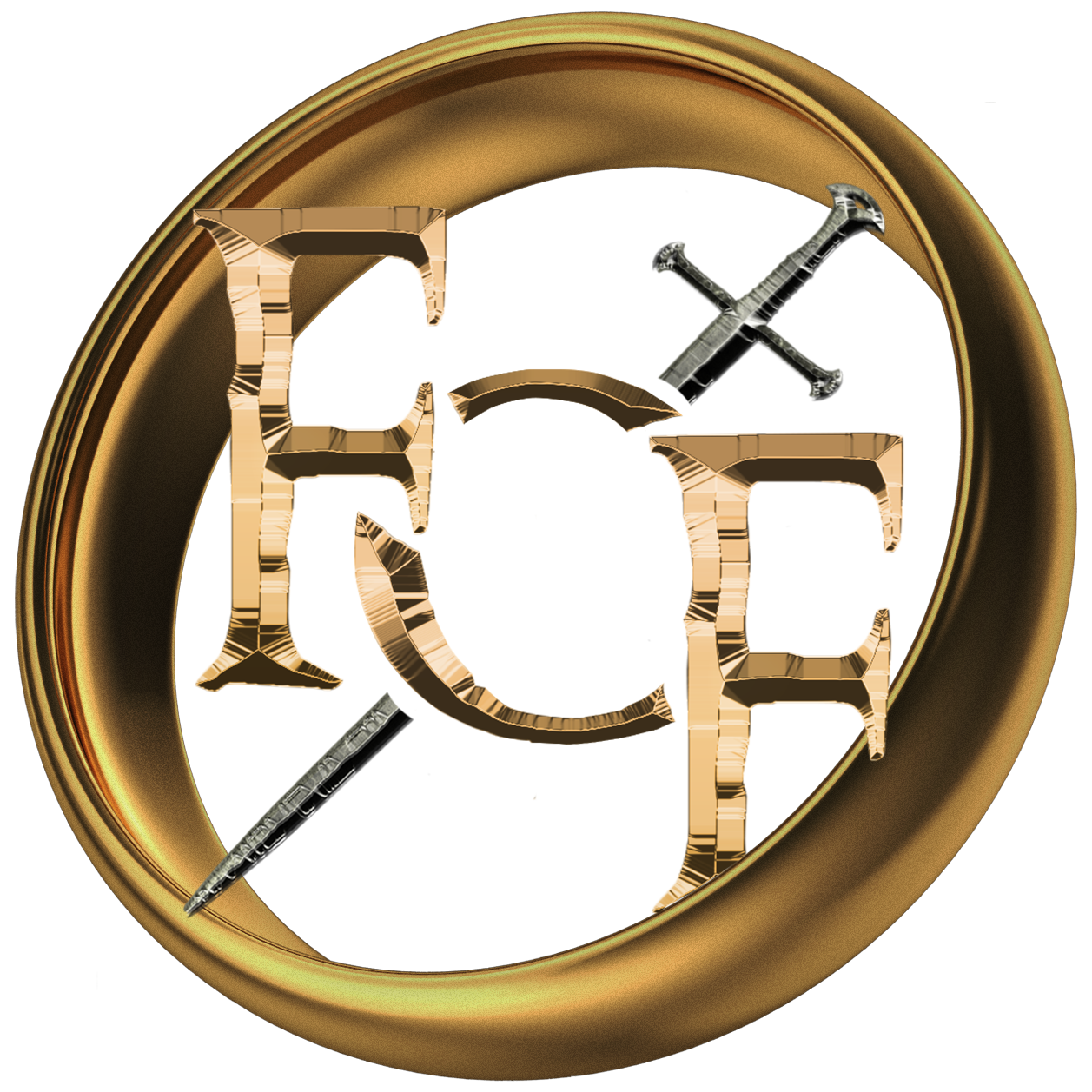
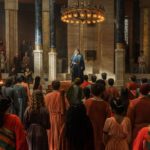
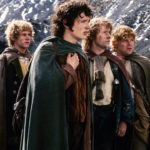
No Comments